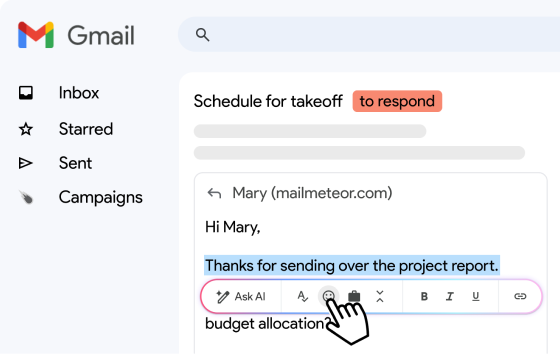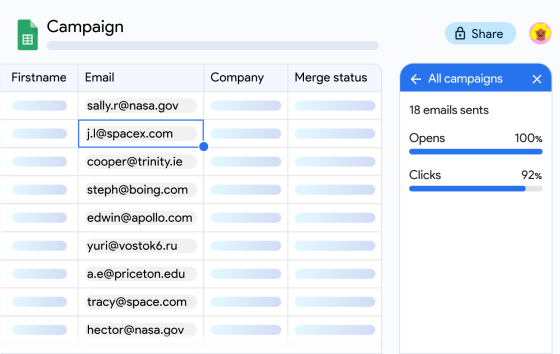Landing that first sales meeting with a promising new lead is thrilling. You’ve crafted the perfect pitch highlighting how your product or service can help their business. Conversations start out hopeful, with prospective customers actively engaged, even excited by what you have to offer.
But then comes the dreaded phrase: “Let me loop in our VP of Sales to discuss further.”
You leave the call deflated, realizing you just wasted hours pitching to the wrong person entirely. According to statistics, 58% of initial sales meetings require at least 5 follow-ups before leading to a closed deal. Constantly presenting to non-decision makers drags out sales cycles to a grinding halt.
Read on to learn:
- Key types of decision makers and how to recognize them
- How to leverage tools like LinkedIn, intent data, and more
- Smart qualifying questions to uncover all stakeholders
- Common mistakes to avoid
We wil go over:
- Who Are Decision Makers and Why Do They Matter?
- Types of Decision Makers
- How Company Size and Structure Impact Decision Makers
- Actionable Steps to Pinpoint Decision Makers
- Tips for Contacting Decision Makers
Let’s dive in,
Who Are Decision Makers and Why Do They Matter?
A decision maker refers to any employee with the authority and control to make major purchasing decisions on behalf of a company. They possess the final sign-off to allocate budget and select solutions that align with organizational needs and goals.
In a business context, decision makers typically hold leadership titles like:
- C-suite Executives: CEO, CFO, CMO
- Vice Presidents
- Directors
- General Managers
- Department Heads
Reaching these contacts quickly helps sales teams stop wasting time presenting to lower-level staffers. Non-managerial staff may seem initially interested, but ultimately lack the budget and influence to seal a deal.
Speaking directly with decision makers also streamlines sales cycles. On average, 58% of initial sales meetings require at least 5 follow-ups before progressing. Constantly bouncing from contact to contact drastically slows momentum.
Types of Decision Makers
While decision-making authority differs across companies, key players tend to fall into five broad categories:
1. Financial Gatekeepers
Overseeing budgets and finances for an organization, financial gatekeepers focus heavily on ROI, profitability, and return on spend. Common titles include:
- Chief Financial Officer (CFO)
- Chief Operating Officer (COO)
- Vice President of Finance
- Directors of Finance
Pitching to financial gatekeepers requires preparing data-driven arguments focused on cost savings, revenue expansion, and overall monetary impact.
2. Technical Experts
Technical experts care most about understanding exactly how a product functions and integrates from back-end architecture standpoints. Typical roles include:
- Chief Technology Officer (CTO)
- Lead Engineers
- IT Directors
When engaging this audience, avoid glossing over technical jargon. Be ready to provide detailed explanations, demos, and documentation focused on functionality.
3. End Users
End users represent the frontline employees who will actually leverage your solution day-to-day. Their key concerns revolve around usability and real-world application.
- Department Managers
- Frontline Team Leads
Pitching end users requires focusing on practicality—how your offering enhances or hinders daily workflows. Provide trials and hands-on demos to prove efficacy and user friendliness.
4. Executives
Top-tier executives take a bird’s eye view, evaluating how potential solutions integrate with overarching company vision and strategy.
- Chief Executive Officer (CEO)
- Chief Marketing Officer (CMO)
- Presidents/Vice Presidents
When engaging executives, clearly explain how your offering aligns with corporate growth objectives and market positioning. Anecdotes of competitor wins generate interest quickly with this audience.
5. Influencers
While not formal decision makers per se, influencers impact purchasing decisions through behind-the-scenes advocacy.
- Department Managers
- Technical Leads without Budget Authority
Influencers crave regular communication that highlights how your solution benefits their department and company as a whole. Maintain consistent nurturing focused on their unique pain points and objectives.
How Company Size and Structure Impact Decision Makers
A company’s size, structure, and industry drastically alter decision-making authority. For example:
- Startups & Small Businesses: Founders and CEOs typically control all major budget decisions in earlier-stage companies.
- Mid-Market Companies: VPs and department heads hold decision-making influence once organizations scale to 50-500 employees.
- Enterprise Corporations: Authority gets further distributed by region, business unit, and department.
Always research the prospect’s org structure and headcount when identifying decision-making contacts.
Actionable Steps to Pinpoint Decision Makers
While decision makers ultimately control organizational spend, identifying them takes some strategic sleuthing. Follow these best practices to locate buying committees faster:
1. Develop Detailed Buyer Personas
Analyze the roles and responsibilities of your existing customers to create detailed buyer personas. Compile demographics like:
- Industry
- Company Size
- Location
Along with individual preferences such as:
- Software usage habits
- Content engagement
- Communication cadence
2. Leverage LinkedIn to Research Titles & Connections
With over 810 million professionals, LinkedIn is a powerful tool for identifying decision makers. Search by company pages and filter by:
- Job title/seniority fit
- Similar connections
- Groups/interests
3. Ask Smart Qualifying Questions
Sample qualifying questions include:
- “What does your typical purchasing process look like for solutions like ours?”
- “Who else might use this platform if implemented?”
- “Are you the final decision maker or are others involved in approving vendors?”
4. Call the Company’s Main Line
Ask the central operator or receptionist questions like:
- “Who do you recommend speaking to about challenges with X?”
- “Who determines budgets for platform improvements in your organization?”
5. Scour the Company Website
Peruse through the “About Us” and “Leadership” pages for insights into personnel hierarchy and responsibilities.
6. Monitor Intent Data
Intent data tracks prospect research patterns like visits to key pages and downloads. Early notification of rising interest helps increase relevancy.
7. Verify Prospect Contact Lists
Verify name spellings, direct contact info, and current titles to ensure accuracy. Minor inaccuracies drastically reduce response rates.
Tips for Contacting Decision Makers
Research Companies & Decision Makers Thoroughly
Decision makers receive hundreds of outreach attempts monthly—76% admit to ignoring generic messaging. Stand out by personalizing each communication.
Provide Value Rather Than Pitching Immediately
Offer tips, insights, or tools to demonstrate expertise in solving their pain points. Establish credibility before pitching.
Utilize Your Network for Warm Introductions
Referred status earns increased trust and response rates compared to cold calls/emails.
Befriend Rather Than Attempt to Bypass Gatekeepers
Establish rapport with assistants and analysts to gain faster access to decision makers.
Diversify Outreach Channels
Diversify efforts across email, phone, LinkedIn, and events to maintain visibility.
Common Mistakes to Avoid
Depending Too Heavily on Job Titles
Job titles only serve as a heuristic. Verify individual authorities despite appearances.
Not Verifying Accurate Contact Data
Always confirm details through multiple channels to avoid mistakes.
Pitching Prematurely
Ensure all buying committee members are informed to prevent deals from stalling.
Conclusion: Locate Decision Makers to Shorten Sales Cycles
Lengthy sales cycles plague organizations, especially those selling complex B2B solutions. Implement the identification and outreach strategies outlined above to eliminate wasted efforts pitching to irrelevant contacts. Secure meetings 70% quicker by reaching key decision makers directly upfront.
Start shortening your sales cycles now!


